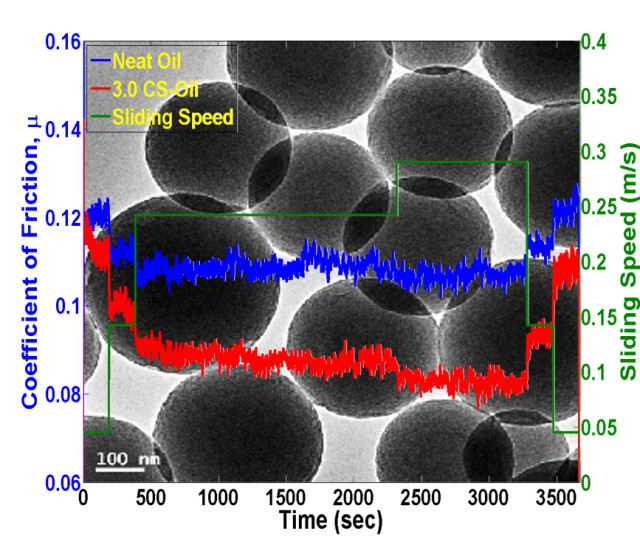
This image taken with an electron microscope shows tiny carbon spheres added to motor oil have been shown to reduce friction and wear typically seen in engines by as much as 25 percent, suggesting a similar enhancement in fuel economy. Purdue researchers also have shown how to potentially mass-produce the spheres. (Purdue University image)
Reducing friction in the internal combustion engine has been a challenge for years, with many different manufacturers of oil products taking a swing at creating a fluid to do just that. Conventional oil, semi-synthetic oil, full synthetic oil, snake oil … you get the picture.
Tiny, smooth carbon spheres as an additive have proven to reduce friction and wear by up to 25 percent – a quantum leap, but there has been no way to mass-produce these spheres, until now.
A team of researchers at Purdue University have devised a method, with their findings appearing in the American Chemical Society’s journal Applied Materials & Interfaces in February.
The spheres are 100-500nm in diameter, which just so happens to match up well with the surface roughness of moving engine components, and the spheres help to fill in the surface roughness areas to help reduce friction and, additionally, improve fuel economy in the process.
According to a report on the Purdue website, “People have been making these spheres for about the last 10 years, but what we discovered was that instead of taking the 24 hours of synthesis normally needed, we can make them in 5 minutes,” said Vilas Pol, an associate professor of chemical engineering at Purdue University.
This requires the engine oil to use 3 percent of the spheres by weight to have the maximum effect of 10 to 25 percent friction reduction.
The research paper was authored by doctoral student Abdullah A. Alazemi, chemical engineering postdoctoral research associate Vinodkumar Etacheri; doctoral student Arthur D. Dysart; engineer Lars-Erik Stacke, from SKF Engineering & Research Centre in Göteborg, Sweden; Pol; and Farshid Sadeghi, Cummins Distinguished Professor of Mechanical Engineering.
“Introducing microspheres helps separate the surfaces because the spheres are free to move,” Alazemi said. “It also is possible that these spheres are rolling and acting as little ball bearings, but further research is needed to confirm this.”

















